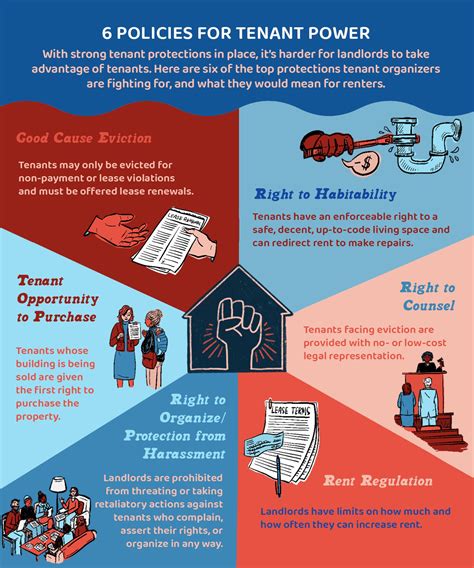
A section of Switzerland’s Birch Glacier collapsed recently, and scientists believe thawing permafrost is a significant contributing factor to the instability that triggered the event. Rising temperatures are destabilizing the permafrost, which acts as a natural glue holding the glacier together, potentially leading to more frequent and dangerous glacial collapses.
Thawing Permafrost Suspected in Swiss Glacier Collapse
The recent collapse of a section of the Birch Glacier in Switzerland has raised concerns among glaciologists, who point to thawing permafrost as a primary cause of the dramatic event. The glacier, nestled in the Swiss Alps, experienced a significant break-off, sending ice and debris tumbling down the mountainside. While glacial movement and melt are natural processes, experts believe the accelerating rate of permafrost thaw is exacerbating the problem, making glaciers increasingly unstable and prone to collapse.
“We assume that the warming destabilizes the permafrost, which leads to destabilizing the rocks, and then these glaciers start moving faster and sometimes these events happen,” said glaciologist Marcia Phillips in an interview. This highlights the crucial role permafrost plays in maintaining the structural integrity of glaciers in high-altitude environments.
The collapse serves as a stark reminder of the far-reaching consequences of climate change, particularly in mountainous regions where glaciers are rapidly retreating and permafrost is thawing at an alarming rate. This incident underscores the urgent need for increased monitoring and research to better understand the complex interactions between glaciers, permafrost, and climate change.
The Role of Permafrost
Permafrost is ground that remains frozen for at least two consecutive years. In mountainous regions, permafrost often acts as a natural binding agent, cementing together rock and ice, and stabilizing slopes. Glaciers, in particular, rely on permafrost for support, as the frozen ground helps to keep them anchored to the bedrock. However, as global temperatures rise, permafrost is thawing at an accelerated pace, weakening its structural integrity.
When permafrost thaws, the ice within the ground melts, causing the soil and rock to become unstable. This can lead to landslides, rockfalls, and, as seen in the case of the Birch Glacier, glacial collapses. The thawing process also releases greenhouse gases, such as carbon dioxide and methane, further contributing to climate change in a dangerous feedback loop.
The instability caused by thawing permafrost doesn’t just affect glaciers; it also threatens infrastructure, communities, and ecosystems in mountainous regions around the world. Buildings, roads, and pipelines built on permafrost are at risk of damage or collapse as the ground beneath them thaws and shifts. Communities that rely on permafrost for water storage and traditional livelihoods are also facing significant challenges.
Climate Change Connection
The link between climate change and permafrost thaw is well-established. Global warming, driven by human activities such as burning fossil fuels, is causing temperatures to rise worldwide. Mountain regions, in particular, are experiencing some of the most rapid warming rates on the planet. This accelerated warming is directly impacting permafrost, causing it to thaw at an unprecedented rate.
According to the Intergovernmental Panel on Climate Change (IPCC), permafrost temperatures have increased significantly in recent decades, and further warming is projected in the future. This means that the problem of permafrost thaw is likely to worsen, leading to more glacial collapses, landslides, and other hazards in mountainous regions.
The collapse of the Birch Glacier is just one example of the many ways in which climate change is impacting the cryosphere—the frozen parts of the Earth. Glaciers around the world are shrinking, sea ice is declining, and snow cover is decreasing. These changes have profound implications for water resources, sea levels, and global climate patterns.
Monitoring and Research Efforts
In response to the growing threat of permafrost thaw, scientists are stepping up monitoring and research efforts in mountainous regions. These efforts include:
- Installing sensors to measure permafrost temperatures and ground movement: These sensors provide valuable data on the rate of permafrost thaw and the stability of slopes.
- Using satellite imagery and aerial photography to track changes in glaciers and permafrost: These remote sensing techniques allow scientists to monitor large areas and identify potential hazards.
- Developing computer models to predict the future behavior of permafrost under different climate scenarios: These models help to inform adaptation strategies and mitigation efforts.
- Conducting field studies to investigate the processes that drive permafrost thaw and glacial instability: These studies provide a better understanding of the complex interactions between glaciers, permafrost, and climate change.
By gathering more data and improving our understanding of these processes, scientists hope to better predict and prepare for future glacial collapses and other hazards associated with permafrost thaw.
The Broader Implications
The collapse of the Birch Glacier highlights the broader implications of climate change for mountainous regions and the world as a whole. As glaciers continue to melt and permafrost thaws, the risk of natural disasters will increase, threatening communities, infrastructure, and ecosystems.
In addition to the direct impacts of these events, there are also indirect consequences that need to be considered. For example, glacial meltwater is an important source of water for many communities, and as glaciers shrink, water availability may decline. Thawing permafrost can also release ancient bacteria and viruses, posing a potential threat to human health.
Addressing the challenges posed by climate change requires a global effort to reduce greenhouse gas emissions and transition to a more sustainable economy. This includes investing in renewable energy, improving energy efficiency, and protecting forests and other natural ecosystems. It also requires adaptation strategies to help communities cope with the impacts of climate change that are already being felt.
Glacier hazards in Switzerland
Glaciers are considered hazards due to the potential for ice avalanches, glacier lake outburst floods (GLOFs), and debris flows triggered by glacier instability. As glaciers melt and thin due to climate change, they can become more prone to sudden collapses, leading to dangerous ice avalanches that can travel long distances and pose a significant threat to infrastructure and human settlements.
GLOFs occur when meltwater accumulates in or beneath a glacier, forming a lake that can suddenly breach its ice or moraine dam, releasing a massive surge of water and debris downstream. These floods can cause widespread destruction, damaging infrastructure, inundating settlements, and disrupting transportation networks.
In addition, melting glaciers can trigger debris flows by destabilizing slopes and releasing large volumes of sediment and rock. These flows can rapidly move down valleys, burying infrastructure, destroying homes, and posing a serious risk to human life.
Switzerland has a long history of dealing with glacier hazards, and the country has implemented various monitoring and mitigation measures to reduce the risks. These measures include:
- Regular monitoring of glaciers and permafrost: This helps to identify unstable areas and assess the potential for hazards.
- Early warning systems: These systems provide timely warnings to communities at risk of glacier hazards.
- Construction of protective structures: These structures, such as dams and retaining walls, can help to mitigate the impacts of glacier hazards.
- Land-use planning: This involves restricting development in areas that are at high risk of glacier hazards.
- Public awareness campaigns: These campaigns educate the public about the risks of glacier hazards and how to stay safe.
Despite these efforts, glacier hazards remain a significant threat in Switzerland, and the risks are likely to increase as climate change continues to accelerate glacier melt.
Adaptation Strategies
Adapting to the impacts of climate change in mountainous regions requires a range of strategies, including:
- Improving infrastructure resilience: This involves strengthening buildings, roads, and other infrastructure to withstand the impacts of extreme weather events and thawing permafrost.
- Developing early warning systems: These systems can provide timely warnings to communities at risk of natural disasters, allowing them to evacuate and take other protective measures.
- Relocating communities: In some cases, it may be necessary to relocate communities that are at high risk of climate change impacts.
- Managing water resources: This involves developing strategies to ensure water availability in the face of glacial melt and changing precipitation patterns.
- Promoting sustainable tourism: This involves developing tourism practices that minimize environmental impacts and support local communities.
- Ecosystem Restoration: Reforestation and other ecological restoration projects can help stabilize slopes, reduce erosion, and enhance the resilience of mountain ecosystems.
By implementing these and other adaptation strategies, communities in mountainous regions can reduce their vulnerability to the impacts of climate change and build a more sustainable future.
The Future of Glaciers
The future of glaciers is uncertain, but it is clear that they will continue to shrink as long as global temperatures continue to rise. The extent of glacial loss will depend on the magnitude of future warming and the effectiveness of efforts to reduce greenhouse gas emissions.
Even if global warming is limited to 1.5 degrees Celsius, as called for in the Paris Agreement, many glaciers will still disappear. However, limiting warming to this level would significantly reduce the extent of glacial loss and help to preserve some of the world’s most iconic and important glaciers.
The loss of glaciers will have profound implications for water resources, sea levels, and global climate patterns. It is therefore essential that we take urgent action to reduce greenhouse gas emissions and protect these vital ecosystems.
The Swiss Alps as a Case Study
The Swiss Alps serve as a crucial case study for understanding the impacts of climate change on mountainous regions. Switzerland has a long history of monitoring glaciers and permafrost, and the country has experienced significant glacial melt and permafrost thaw in recent decades.
The Swiss Alps are also home to a large number of communities and infrastructure that are vulnerable to climate change impacts. The country has therefore invested heavily in adaptation measures, such as early warning systems, protective structures, and land-use planning.
By studying the impacts of climate change in the Swiss Alps and the adaptation strategies being implemented, we can gain valuable insights that can be applied to other mountainous regions around the world.
Individual Actions
While addressing climate change requires global action, there are also many things that individuals can do to reduce their carbon footprint and contribute to a more sustainable future. These include:
- Reducing energy consumption: This can be achieved by using energy-efficient appliances, turning off lights when leaving a room, and reducing heating and cooling needs.
- Using sustainable transportation: This includes walking, biking, using public transportation, and driving electric vehicles.
- Eating less meat: Meat production is a major source of greenhouse gas emissions, so reducing meat consumption can have a significant impact.
- Reducing waste: This can be achieved by recycling, composting, and avoiding single-use plastics.
- Supporting sustainable businesses: This involves buying products and services from companies that are committed to sustainability.
- Advocating for climate action: This includes contacting elected officials, participating in protests, and supporting organizations that are working to address climate change.
By taking these actions, individuals can help to create a more sustainable future and protect the world’s glaciers and other vulnerable ecosystems.
Conclusion
The collapse of the Birch Glacier serves as a powerful reminder of the urgent need to address climate change. Thawing permafrost is destabilizing glaciers and increasing the risk of natural disasters in mountainous regions around the world. By reducing greenhouse gas emissions, implementing adaptation strategies, and promoting sustainable practices, we can protect these vital ecosystems and build a more resilient future. The situation demands immediate action and sustained commitment from governments, businesses, and individuals alike. Failing to address this issue will only lead to more frequent and severe glacial collapses, threatening lives, infrastructure, and the delicate balance of our planet’s ecosystems. The ongoing monitoring and research efforts are crucial, but they must be coupled with concrete steps to mitigate the root causes of climate change. The fate of glaciers, and the communities that depend on them, hangs in the balance.
Frequently Asked Questions (FAQ)
-
What caused the collapse of the Birch Glacier in Switzerland?
- The collapse is primarily attributed to thawing permafrost, which acts as a natural “glue” holding the glacier together. Rising temperatures are destabilizing the permafrost, leading to weakened structural integrity and eventual collapse. Other factors, such as glacial movement and melt, may also have contributed.
-
What is permafrost and why is it important?
- Permafrost is ground that remains frozen for at least two consecutive years. In mountainous regions, it stabilizes slopes and anchors glaciers to bedrock. Thawing permafrost leads to ground instability, landslides, and glacial collapses. It also releases greenhouse gases, further contributing to climate change.
-
How is climate change related to the thawing of permafrost?
- Climate change, driven by human activities, is causing global temperatures to rise, especially in mountainous regions. This accelerated warming directly impacts permafrost, causing it to thaw at an unprecedented rate. The IPCC reports significant permafrost temperature increases in recent decades, with further warming projected.
-
What are the potential consequences of thawing permafrost beyond glacial collapses?
- Thawing permafrost threatens infrastructure (buildings, roads, pipelines), communities relying on permafrost for water storage and traditional livelihoods, and ecosystems. It can also release ancient bacteria and viruses, posing a potential threat to human health.
-
What measures are being taken to monitor and address the issue of thawing permafrost?
- Scientists are using sensors to measure permafrost temperatures and ground movement, satellite imagery to track changes in glaciers and permafrost, computer models to predict future behavior, and field studies to understand the processes driving permafrost thaw and glacial instability. Adaptation strategies include improving infrastructure resilience, developing early warning systems, and managing water resources.
-
What are Glacier Lake Outburst Floods (GLOFs)?
- GLOFs are floods that occur when meltwater accumulates in or beneath a glacier, forming a lake that can suddenly breach its ice or moraine dam, releasing a massive surge of water and debris downstream. These floods can cause widespread destruction.
-
What specific measures are Switzerland taking to deal with glacier hazards?
- Switzerland is regularly monitoring glaciers and permafrost, implementing early warning systems, constructing protective structures like dams and retaining walls, practicing land-use planning to restrict development in high-risk areas, and conducting public awareness campaigns.
-
What kind of individual actions can one take to help reduce the effects of climate change on glaciers and permafrost?
- Individuals can reduce their energy consumption, use sustainable transportation, eat less meat, reduce waste, support sustainable businesses, and advocate for climate action through contacting elected officials or supporting environmental organizations.
-
What does the future hold for glaciers, and how does limiting global warming play a role?
- The future of glaciers is uncertain, with continued shrinking expected. Limiting global warming to 1.5 degrees Celsius, as called for in the Paris Agreement, would significantly reduce the extent of glacial loss and help preserve some of the world’s glaciers.
-
In what ways do the Swiss Alps serve as a case study for other mountain regions affected by climate change?
- The Swiss Alps serve as a crucial case study due to Switzerland’s long history of monitoring glaciers and permafrost, the significant glacial melt and permafrost thaw experienced in recent decades, and the investment in adaptation measures, offering valuable insights applicable to other mountainous regions globally.









